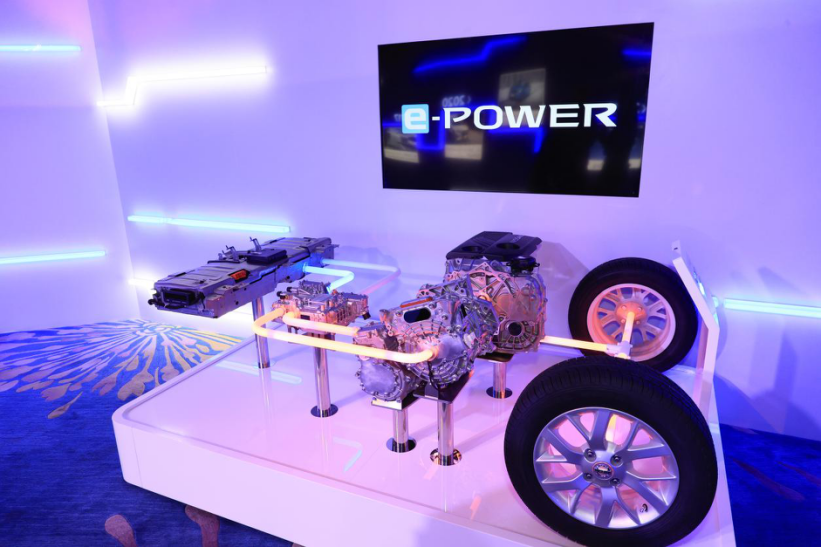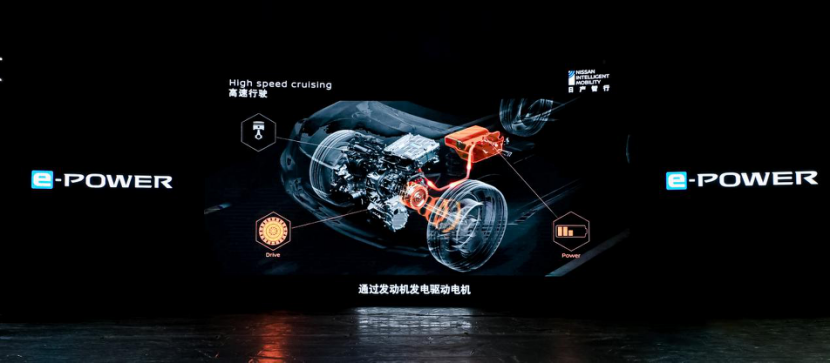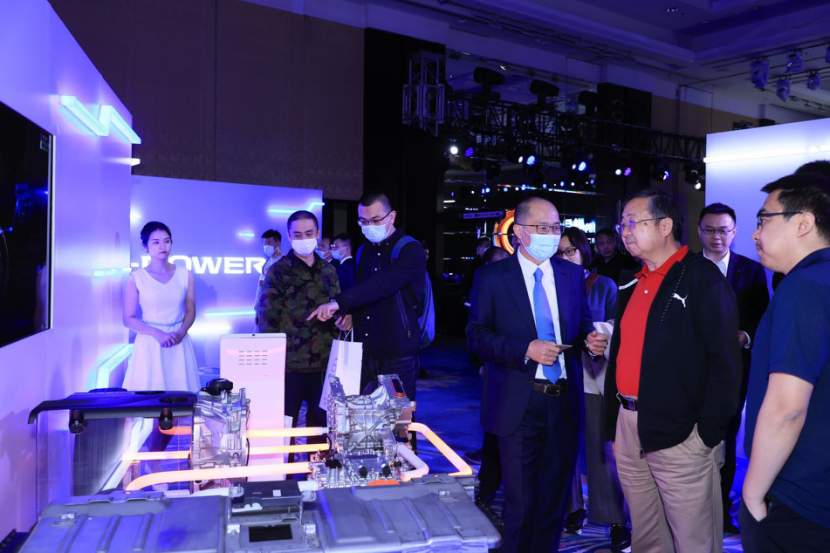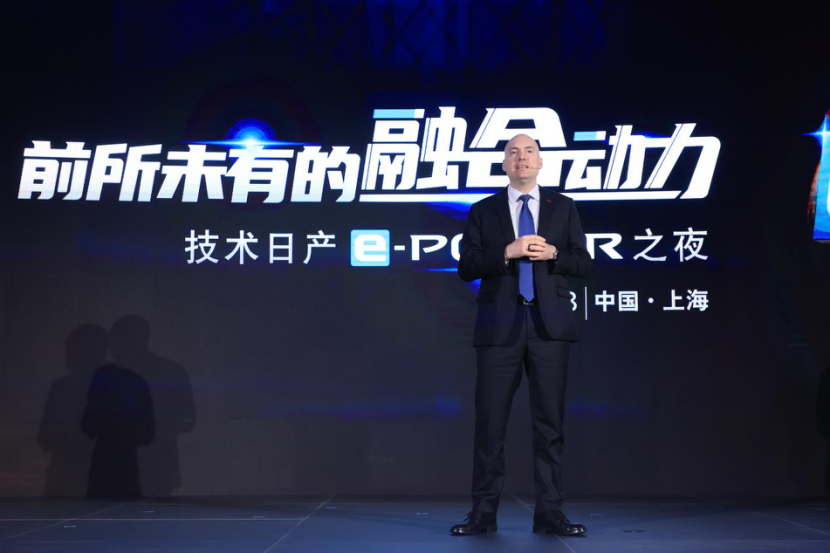*This article is reproduced from the official account of AutocarWeekly.
Author: Xue Yafu
Every technological revolution and innovation drives progress in the times. In the 2021 automotive market, various new technologies are emerging endlessly, dazzling people’s eyes. This year’s Shanghai Auto Show is a heavyweight stage where various experts show their skills.
Taking the electric-drive era as an opportunity, Nissan has introduced its all-new power system, e-POWER. Facing the critical stage of the carbon economy era and the transformation of the automotive industry, Nissan has introduced its unique electric-drive technology in response to the trend of electric-drive development in the country. Its technology is different from hybrid, plug-in, extended-range, and pure electric technologies.
Very powerful and comfortable too
When the first car was introduced, people at that time could not have imagined that more than a hundred years later, the earth’s energy structure would undergo such a significant change, driving the development of the way cars are powered. Today, electrification has become the direction of the automotive industry’s transformation, giving rise to many possibilities and marking a new stage of industry structure and market development.
Nissan should rightly occupy a prominent position in the field of electric-drive cars. The e-POWER power system, which was born from the collaboration between the GT-R and LEAF teams, not only won multiple international awards but also received high praise from consumers, achieving both sales and reputation.

As of March 2021, the global cumulative sales of vehicles equipped with e-POWER have exceeded 500,000, of which e-POWER note has won the sales champion of the compact car segment in the Japanese market for three consecutive years. The recognition of the e-POWER power system by consumers is enough to demonstrate its high quality and also has prompted Nissan to upgrade to the second-generation e-POWER power system, which not only better serves consumers but also conforms to the trend of the times.
Compared with the common hybrid, plug-in, extended-range, and pure electric technologies, the e-POWER power system of Nissan has an unusual working mode. Although e-POWER is a system that is 100% driven by an electric motor, it contains an engine. The engine in this system does not directly drive the wheels but is responsible for recharging the battery. When you read this, you may be curious: what are the advantages of generating and recharging by burning fuel in the engine compared to using a charging pile?
 The most intuitive advantage, of course, is significantly reduced time for supplementing energy for vehicles. No matter how fast a fast charge is, it cannot match the speed of “filling up the tank with gasoline in two minutes”. However, this point alone is obviously not enough to convince consumers. To get the answer to this question, let’s start with the working principle of the “generator”.
The most intuitive advantage, of course, is significantly reduced time for supplementing energy for vehicles. No matter how fast a fast charge is, it cannot match the speed of “filling up the tank with gasoline in two minutes”. However, this point alone is obviously not enough to convince consumers. To get the answer to this question, let’s start with the working principle of the “generator”.
As we all know, there is an optimal operating range for fuel engines. However, it is difficult to keep the engine in the optimal operating range for a long time during our daily driving. If we use the engine as a generator from a different perspective, we can keep the engine in the optimal operating range and maximize thermal efficiency. This is also the fundamental reason why Nissan used the GT-R team to participate in the development of e-POWER power system.
With Nissan’s unremitting efforts, the engine in the e-POWER power system has achieved 50% comprehensive thermal efficiency, resulting in fuel consumption as low as 2.67L per 100 km. At the same time, since the engine does not participate in direct driving throughout the process and its operating time is reduced by 50% compared to traditional HEVs, there is also a rather direct improvement in NVH.
In order to capture the energy output by the efficient “generator”, the e-POWER power system is equipped with a set of 1.5 kWh high-performance battery pack. The advantage of this battery pack is its high-strength work mode of flash charging and discharging. During acceleration, the high-power battery instantly releases energy to drive the high-torque electric motor to achieve explosive output, making the vehicle power more powerful, which can provide consumers with a better performance experience. During deceleration, the efficient engine selectively rapidly stores energy for the high-power battery to ensure that the vehicle always has good energy reserves.
In addition to achieving convenient and efficient energy conversion, the e-POWER power system also has strong performance and comfortable user experience. Based on the Nissan E-developed motor control technology, not only the peak torque of the e-POWER power system is above 500 Nm, but also the motor torque variation is suppressed to maintain smooth acceleration. Combined with the smart “single pedal mode”, vehicles equipped with the e-POWER power system will have a sufficiently broad and smooth driving experience.
Nissan demonstrated the smoothness of the e-POWER power system output by driving on undulating mountain roads. Nissan claims that when driving on city roads or mountain roads, using the accelerator pedal can control a maximum deceleration of about 0.15 G, effectively reducing the frequency of pedal switching and reducing the burden of driving, achieving a relaxed and joyful driving experience.
Comparison of e-POWER advantages: Embrace the future based on existing technology.If you are familiar with the new energy power system of Japanese brands, then in the process of understanding the Nissan e-POWER power system, you may recall the recently launched Honda i-MMD hybrid system. In this system, the majority of power is provided by the motor, and the engine is only used for power generation under most working conditions. Only under stable high-speed working conditions is the engine connected to the drive shaft to directly drive the vehicle.

In contrast, the Nissan e-POWER power system is more thorough – the engine is only used for power generation during the entire process, and it emphasizes ensuring that the engine works in the most efficient range to ensure the efficiency of power generation. This means that the working principle and structure of the Nissan e-POWER power system will be simpler, and it can ensure high fuel economy at low speeds, while the pure electric motor operation will bring better quietness and larger power potential.
Toyota’s THS hybrid system still uses the strategy of parallel driving of motors and engines. The advantage is that Toyota has already researched this system quite well, so the cost will be relatively lower. However, the use of the planetary gear coupling driving method means that the calibration of this system is relatively complicated, and the utilization rate of energy has already approached its limit.
Compared with Toyota and Honda’s hybrid systems, the Nissan e-POWER power system well balances energy utilization and performance, and there is still room for improvement in these two areas in the future. In the parallel development strategy of energy-saving cars and new energy vehicles in the future, Nissan’s advantages will become increasingly obvious with the passage of time.
Will e-POWER become Nissan’s new generation of “mechanical famous brand”?
From the L series engine used since the 240Z, to the SR and RB series engines that dominate various race tracks, to the VQ series engines used by Nissan and Infiniti, Nissan’s power system is not only an important part of the history of Japanese “mechanical famous brands”, but also gradually transforms in the direction of high performance and comfort. At this important node of industry development, Nissan’s release of the 2.0 version of the e-POWER power system is undoubtedly an important milestone for this Japanese giant in the history of “mechanical famous brands”.
And Dongfeng Nissan’s timely introduction of the second-generation e-POWER power system not only conforms to Dongfeng Nissan’s consistent image of “technological innovation by Nissan”, but also is a strong response to the increasingly competitive domestic new energy vehicle market.
Whether it is hybrid or pure electric, in the eyes of manufacturers and consumers, it is the development trend of the future automobile industry. Due to this decisive transformation, China’s automobile industry has shown the hope of achieving “overtaking on a bend” through this opportunity. Although it has certain research and development advantages, the Chinese automobile industry obviously still lacks accumulation, and there is still much room for improvement in the two major areas of power system reliability and driving experience.The arrival of e-POWER technology can fully leverage its advantages in technology and structure, thus playing a positive role in promoting the transformation of the industry towards electrification and the upgrading of related core components technology. After all, no matter how “overtaking on a bend” we are, making cars is still for serving consumers. We cannot just think about “running while taking off our pants” and sacrifice user experience.
e-POWER technology is not only an inspiration for the industry’s development, but also provides consumers with better choices – cars that inherit the tradition of traditional fuel vehicles but with better user experience. It is indeed “excellent” compared to new energy vehicles whose supporting facilities cannot keep up with production and whose experience is somewhat unsatisfactory.
In Nissan’s view, e-POWER technology is an important strategy to achieve future corporate development. Facing the critical stage of the carbon economy era and the transformation of the automotive industry, Nissan plans to launch all new models in its core markets as electric vehicles in the next 10 years. As the core technology of the company’s electrification strategy, e-POWER technology is not only a product’s core technology, but also a key to accelerating the achievement of the company’s carbon neutrality and zero-emission goals.
As the earliest car manufacturer to promote electrification, Nissan’s e-POWER technology is no longer just a means of showing off one’s muscles in the new century, but also a tribute to a more beautiful life with people and cars. Along the path of adhering to e-POWER technology, everything that Nissan will bring to us in the future is so worth looking forward to.

This article is a translation by ChatGPT of a Chinese report from 42HOW. If you have any questions about it, please email bd@42how.com.